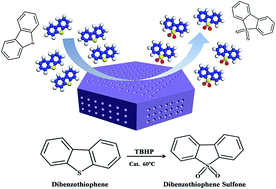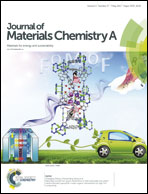Synthesis of hierarchical TS-1 zeolites with abundant and uniform intracrystalline mesopores and their highly efficient catalytic performance for oxidation desulfurization†
Abstract
In this work, we report a hydrothermal route to synthesize hierarchical TS-1 zeolites with abundant mesopores (5–40 nm) inside the zeolite crystals by using polydiallyldimethylammonium chloride (PDADMAC) as a mesopore-directing template. The textural parameters of the hierarchical TS-1 zeolites can be adjusted by changing the amount of PDADMAC in the synthesis system; in particular, a hierarchical TS-1C sample with abundant and uniform mesopores (around 10 nm) can be obtained by optimizing the amount of PDADMAC. The resultant hierarchical TS-1 zeolite exhibits excellent catalytic activity in the oxidation of bulky organosulfur compounds. Moreover, the hierarchical TS-1 catalysts possess high structural stability and can be easily recycled without any post treatment. This work demonstrates a facile route to synthesize hierarchical TS-1 zeolites with abundant intracrystalline mesopores by using a cheap and easily available mesoporous template, which will open new perspectives for the potential application of hierarchical TS-1 zeolites in catalytic oxidation of bulky organic compounds.



 Please wait while we load your content...
Please wait while we load your content...